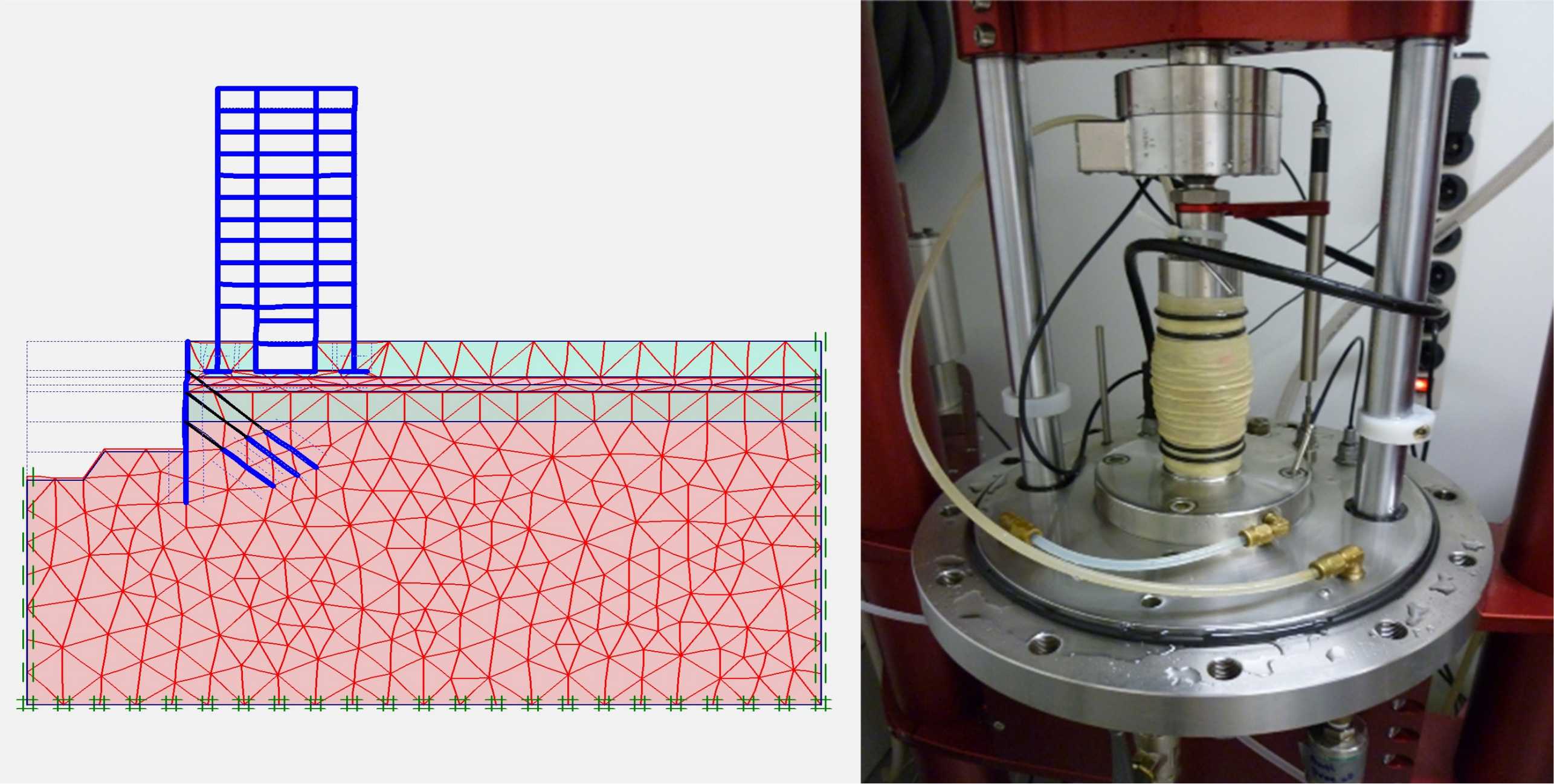Theoretical & Experimental Soil Mechanics
Lecturers
Prof. I. Anastasopoulos, R. Herzog, Dr. A. Marin, Dr. M. Schneider, Dr. E. Korre
Objective
The course aspires to bridge the gap between theoretical and experimental soil mechanics, enabling the students to conduct advanced geotechnical design with properly calibrated constitutive models, but also to plan and perform appropriate laboratory tests to obtain model parameters. After a recap of consolidation theory, the students are introduced to stress paths, stress-strain relations, the fundamentals of plasticity theory and its application, followed by an introduction to critical-state soil mechanics. The lectures are accompanied by practical exercises and tutorials on the calibration of advanced constitutive models used in engineering practice. In parallel, the fundamentals of lab testing are introduced, and the students are split in groups to conduct 3 laboratory exercises: oedometer and triaxial testing. The course is corroborated by an introduction to centrifuge modelling, including the fundamentals of similarity laws, and showcasing the path from soil element testing, to model calibration, to validation if numerical analysis models against centrifuge model tests.

Contents
- Overview of soil behaviour, 1D Consolidation theory and typical applications
- Triaxial and direct shear tests: consolidation and shear, drained and undrained response
- Stress paths
- Stress-strain relationships
- Plasticity theory
- Application of plasticity theory (upper and lower limit analysis, limit equilibrium)
- Critical State Soil Mechanics (original and modified cam clay model)
- Calibration of hardening soil model in Plaxis
- Introduction to centrifuge modelling
Course catalogue
Downloads (password protected): protected page Moodle